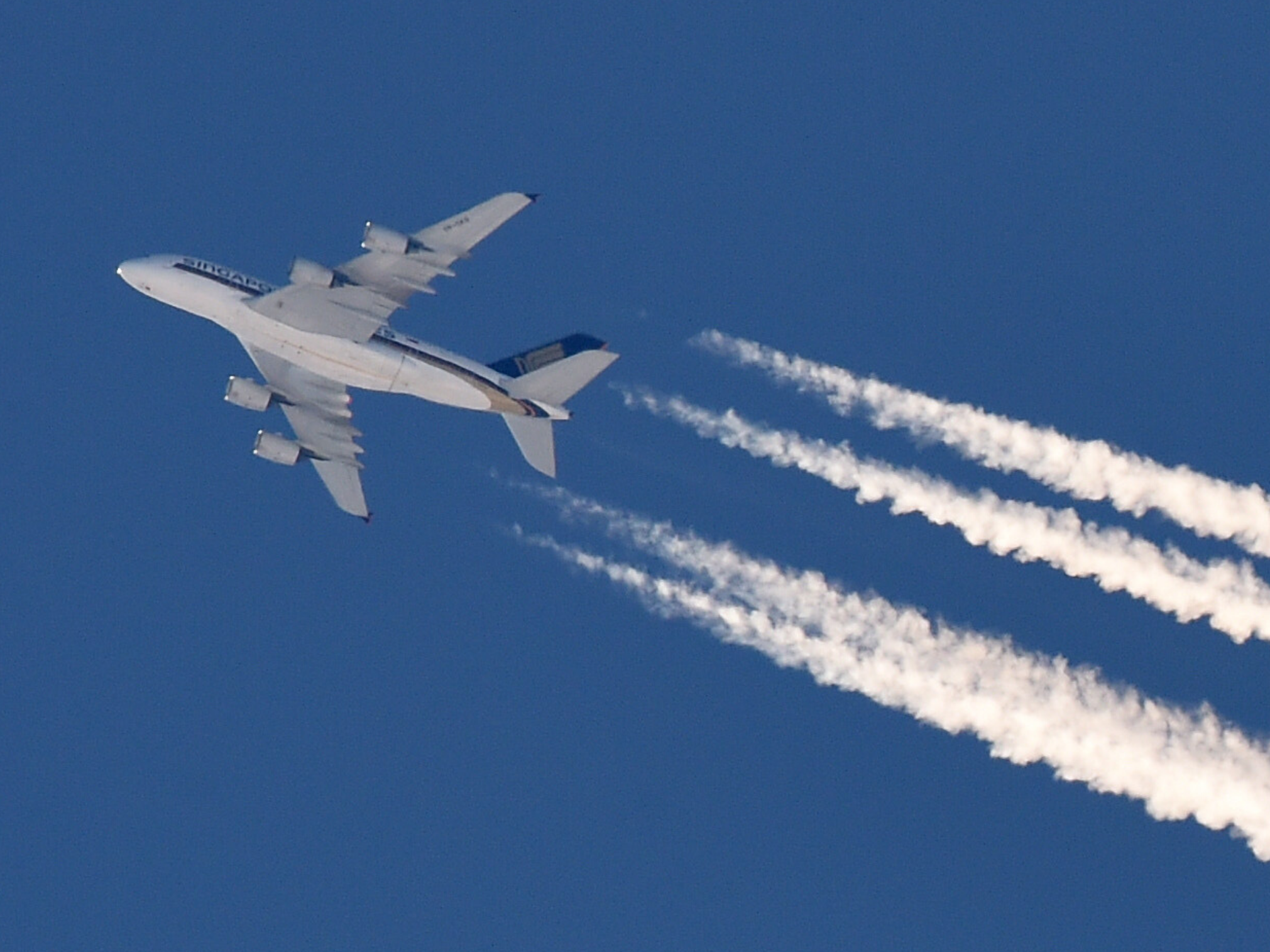This website uses cookies so that we can provide you with the best user experience possible. Cookie information is stored in your browser and performs functions such as recognising you when you return to our website and helping our team to understand which sections of the website you find most interesting and useful.

The climate cost of aviation could be significantly reduced by making small changes to the altitudes at which aircrafts fly, a new study suggests.
Contrails – the white fumes often spotted trailing behind planes – are thought to have more of a warming effect than the CO2 produced by planes.
But new research suggests changing the altitude of just 1.7 per cent of flights by a margin of 2,000ft could reduce contrails’ climate impact by nearly 60 per cent.
Furthermore, when combined with using cleaner engines, contrail-related harm could be slashed by up to 90 per cent, the study led by Imperial College London (ICL) scientists found.
“According to our study, changing the altitude of a small number of flights could significantly reduce the climate effects of aviation contrails,” said lead author Dr Marc Stettler, a senior lecturer at ICL’s faculty of engineering.
“This new method could very quickly reduce the overall climate impact of the aviation industry.”
Created with Sketch.
Created with Sketch.
1/7 Mont Blanc aerial photographs from 1919 (left) and 2019 (right)
The images show the impact that climate change has had upon the mountain's glaciers
Walter Mittelholzer, ETH-Bibliothek Zürich/Dr Kieran Baxter, University of Dundee
2/7 Walter Mittelholzer's biplane
ETH-Bibliothek Zürich
3/7 Mont Blanc aerial photographs from 1919 (left) and 2019 (right)
Walter Mittelholzer, ETH-Bibliothek Zürich/Dr Kieran Baxter, University of Dundee
4/7 Walter Mittelholzer
ETH-Bibliothek Zürich
5/7 Mont Blanc aerial photographs from 1919 (left) and 2019 (right)
Walter Mittelholzer, ETH-Bibliothek/Dr Kieran Baxter, University of Dundee
6/7 Dr Kieran Baxter photographing Mont Blanc in 2019
Dr Alice Watterson, University of Dundee
7/7 Dr Kieran Baxter in front of the glacier
Dr Alice Watterson, University of Dundee
1/7 Mont Blanc aerial photographs from 1919 (left) and 2019 (right)
The images show the impact that climate change has had upon the mountain's glaciers
Walter Mittelholzer, ETH-Bibliothek Zürich/Dr Kieran Baxter, University of Dundee
2/7 Walter Mittelholzer's biplane
ETH-Bibliothek Zürich
3/7 Mont Blanc aerial photographs from 1919 (left) and 2019 (right)
Walter Mittelholzer, ETH-Bibliothek Zürich/Dr Kieran Baxter, University of Dundee
4/7 Walter Mittelholzer
ETH-Bibliothek Zürich
5/7 Mont Blanc aerial photographs from 1919 (left) and 2019 (right)
Walter Mittelholzer, ETH-Bibliothek/Dr Kieran Baxter, University of Dundee
6/7 Dr Kieran Baxter photographing Mont Blanc in 2019
Dr Alice Watterson, University of Dundee
7/7 Dr Kieran Baxter in front of the glacier
Dr Alice Watterson, University of Dundee
Contrails are produced when hot exhaust gases meet colder, low-pressure air in the atmosphere. Moisture then condenses on the black carbon particles within the fumes, forming the white streaks noticeable from Earth.
While most contrails disappear within minutes, some spread and mix with other contrails and clouds, forming ‘contrail cirrus’ which can linger for as long as 18 hours.
These larger clouds produce an effect called “radiative forcing”, in which the balance between the radiation emitted from the Earth and that which it receives from the sun is disrupted, causing a change in climate.
Although studies suggest this process could play as large a role in heating the planet as CO2 – which remains in the atmosphere for hundreds of years – the impact of contrails is relatively short-lived, making it potentially easier to curtail.
Contrails only form and linger in thin layers of the atmosphere, which have a higher humidity – therefore small changes in the altitude at which aircrafts fly can in theory allow them to drastically limit the number of contrails they produce.
Using data from Japan’s airspace, the scientists in the ICL-led study, published in the journal Environmental Science & Technology, found that just two per cent of flights were responsible for 80 per cent of the “radiation forcing” within the surrounding airspace.
By simulating these planes to fly either 2,000 feet higher or lower than their actual flight paths, the scientists found they could cut this effect by 59 per cent.
While some extra fuel would be consumed by changing the flight path, researchers said the impact of the CO2 released as a result was more than offset by the reduced contrail formation.
Dr Stettler suggested that by only changing the flight path of a minority of aircrafts, large hikes in CO2 emissions could be avoided.
“We’re conscious that any additional CO2 released into the atmosphere will have a climate impact stretching centuries into the future, so we’ve also calculated that if we only target flights that wouldn’t emit extra CO2, we can still achieve a 20 per cent reduction in contrail forcing," he said.
The researchers also suggested that up to a 90 per cent reduction in contrail-related harm could be avoided if this approach was used in conjunction with more efficient engine technologies, which spout less contrail-forming black carbon particles into the atmosphere.
Campaigners are increasingly warning of the importance of tackling non-CO2 aviation emissions.
Researchers from Germany’s Institute of Atmospheric Physics calculated last year that contrail-related warming was set to triple by 2050.
But the UN’s plan to offset any increase in global aviation emissions above 2020 levels, known as the "Corsia" agreement, does not take into account the industry’s non-CO2 impact on the climate.



 Africana55 Radio
Africana55 Radio 

